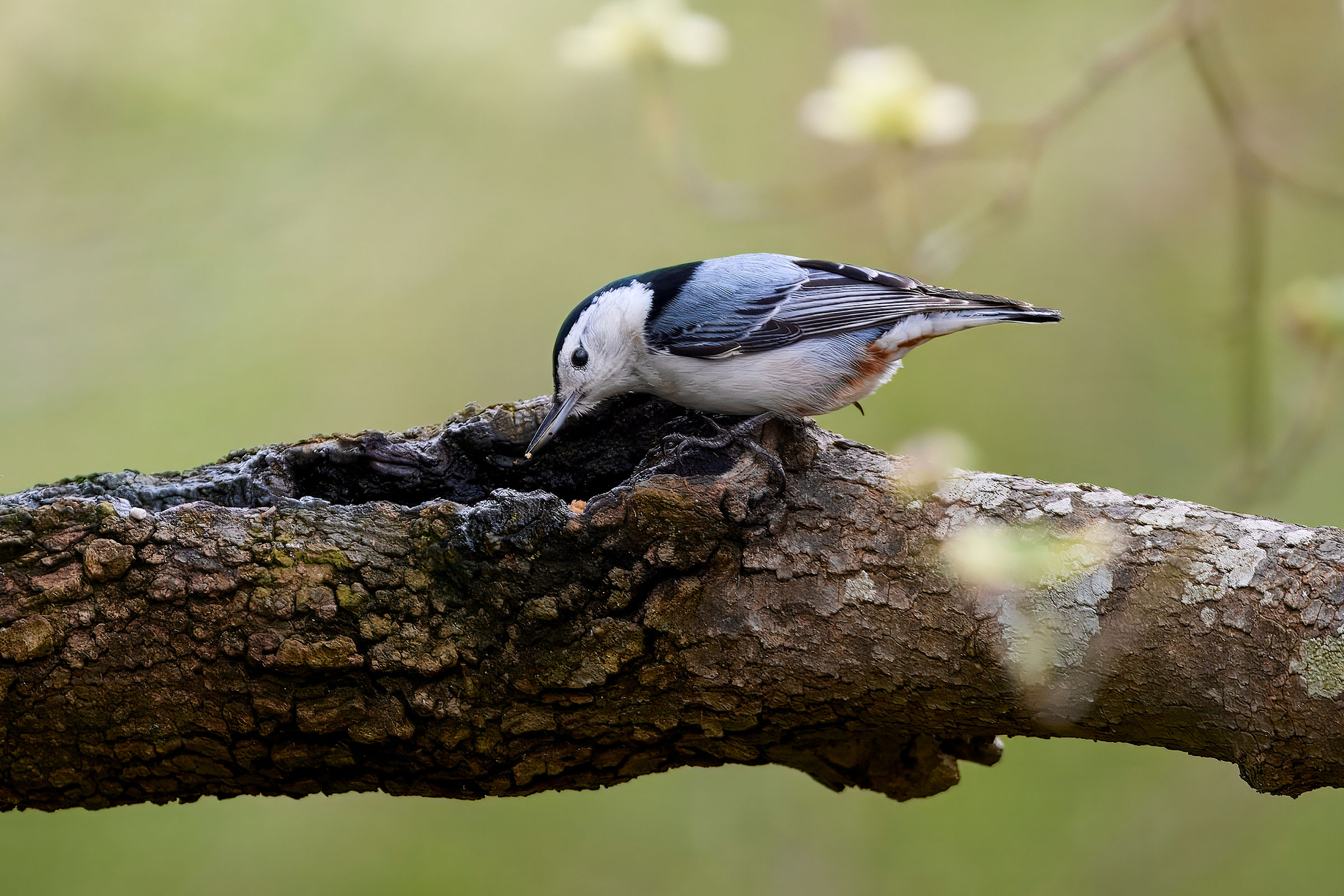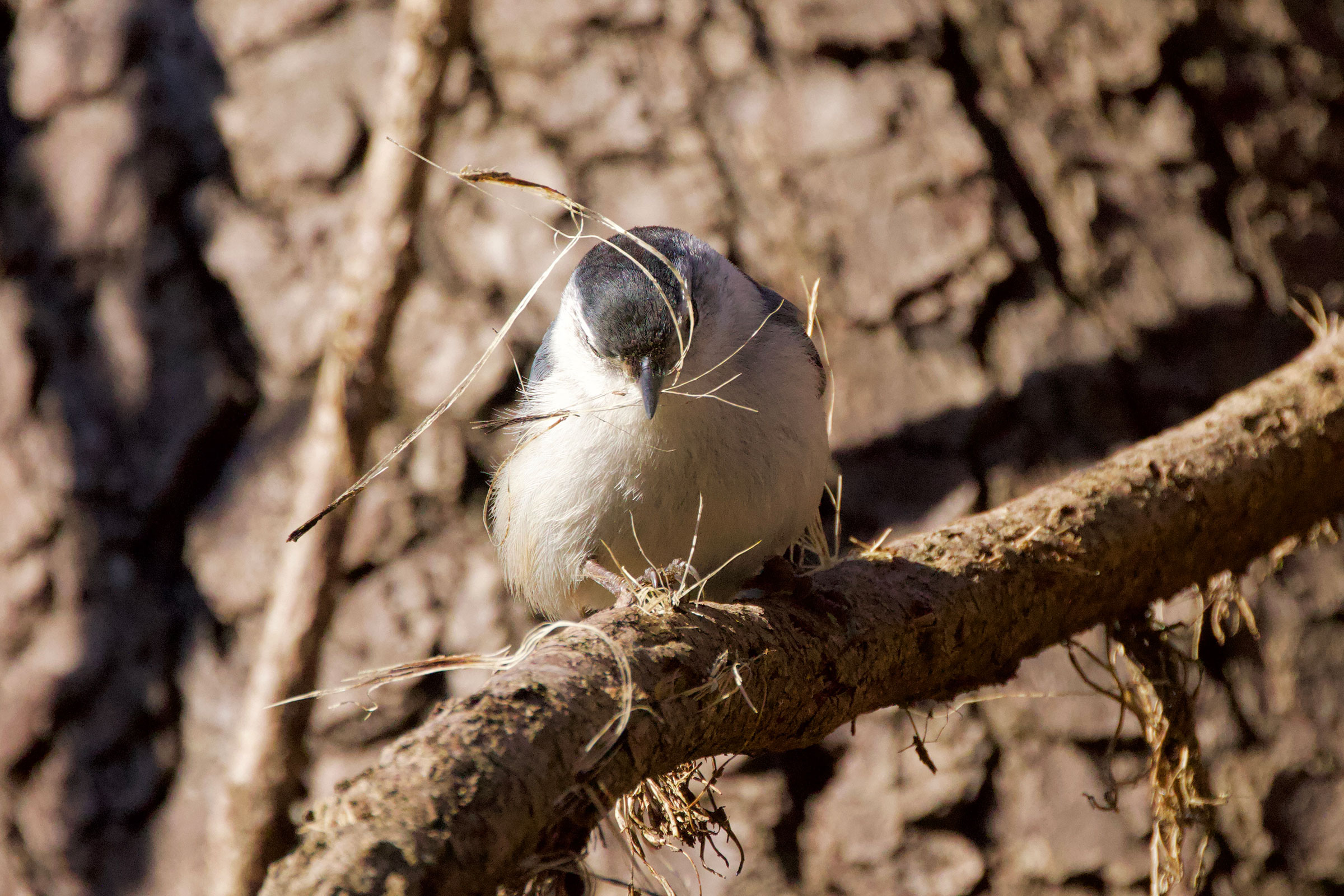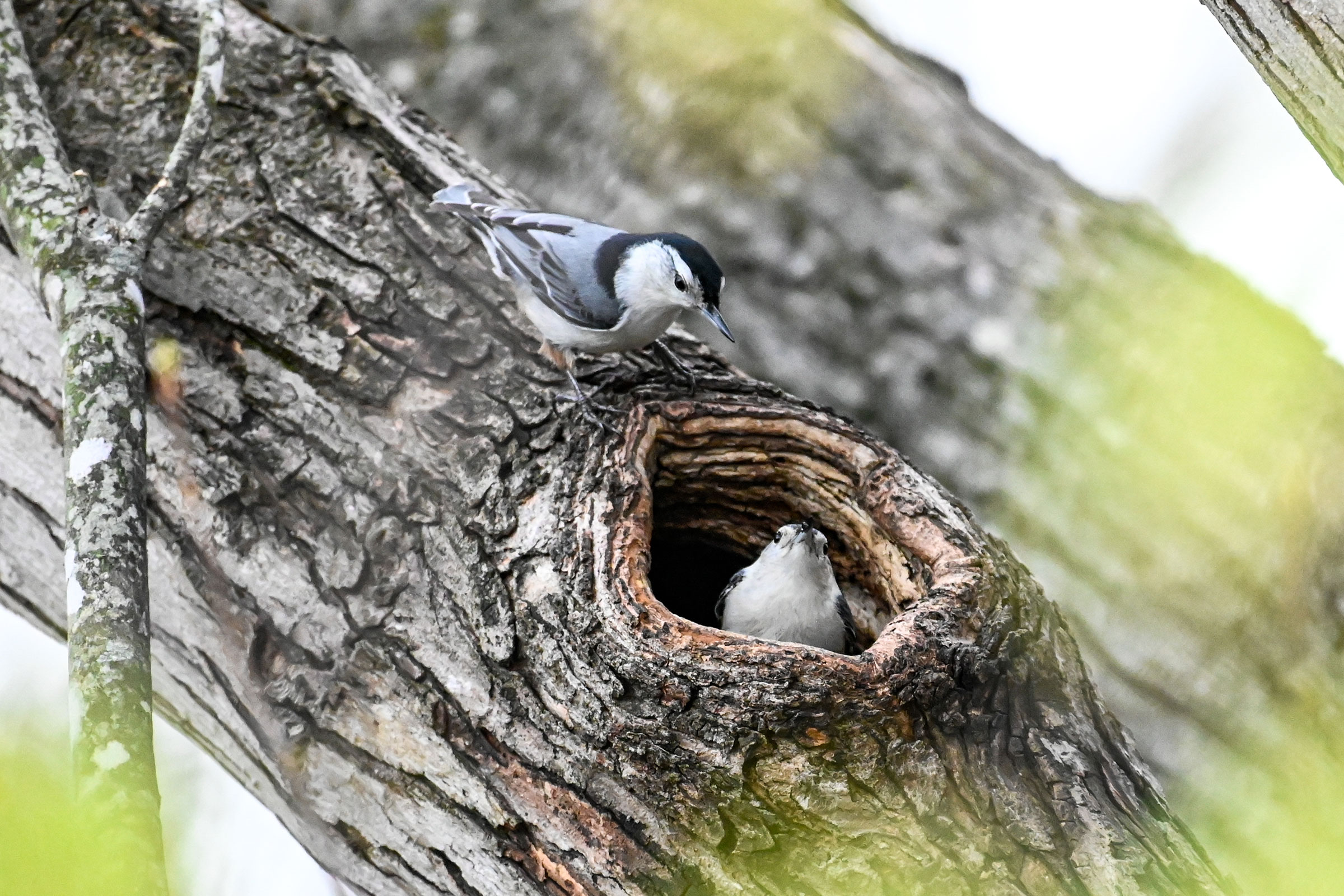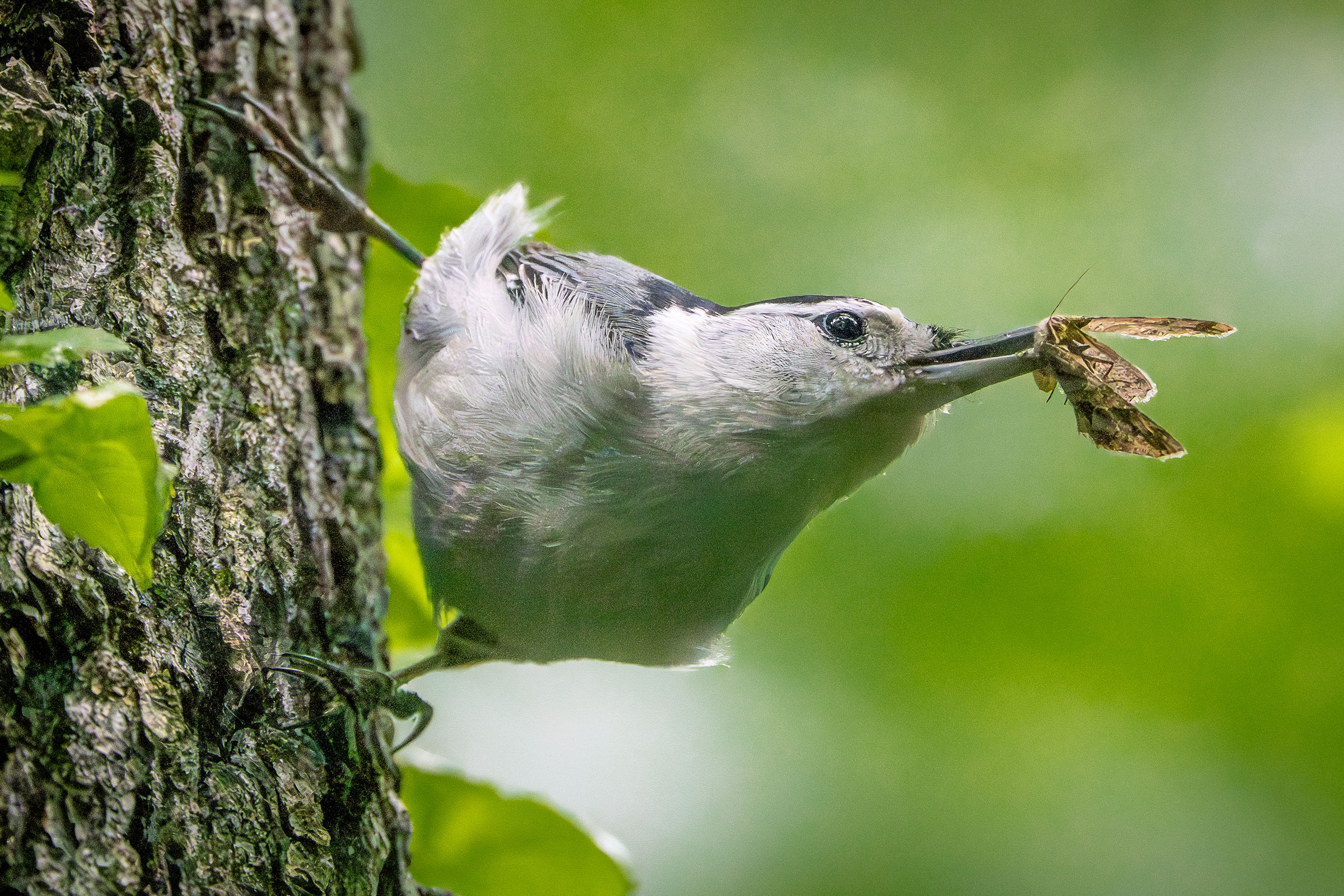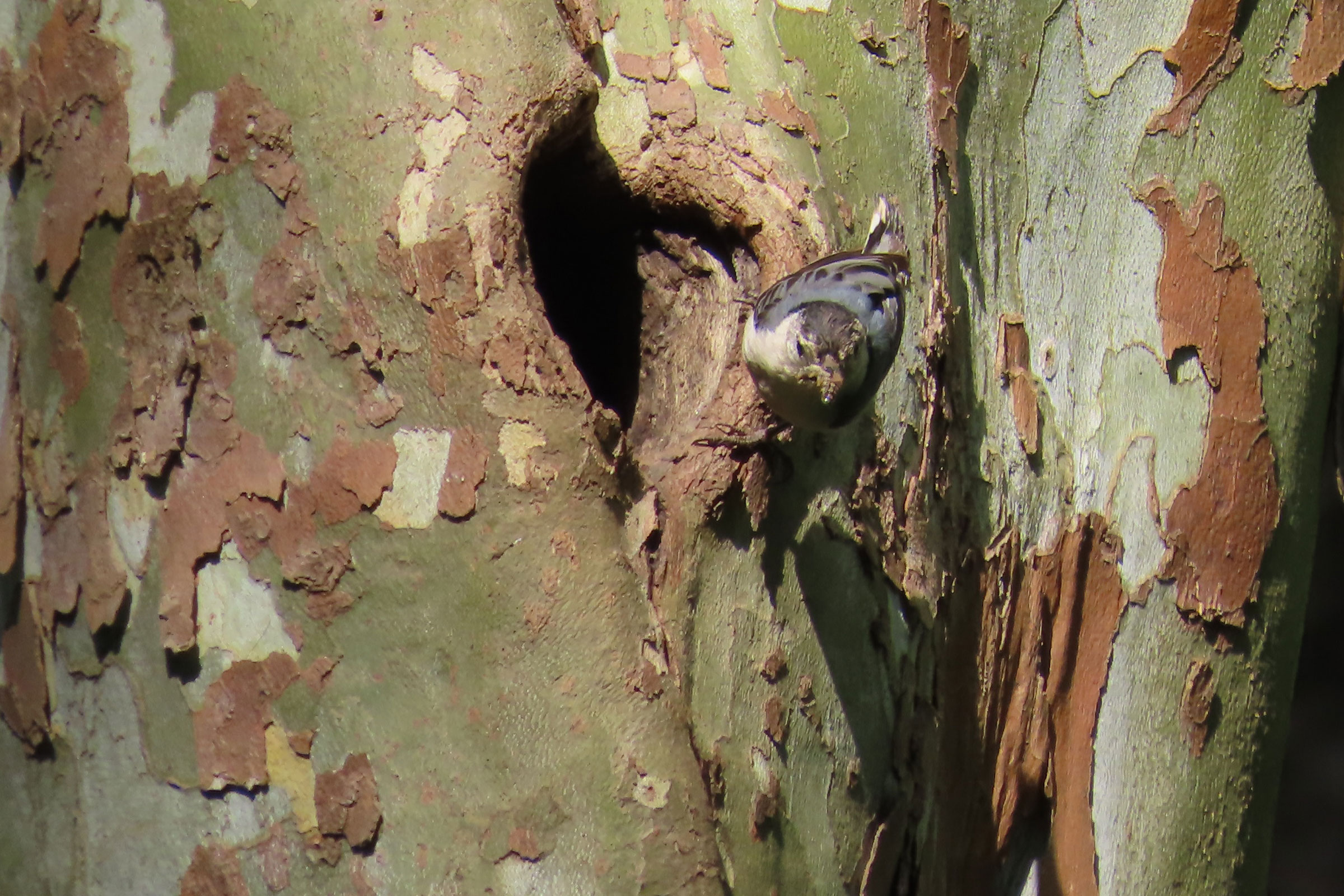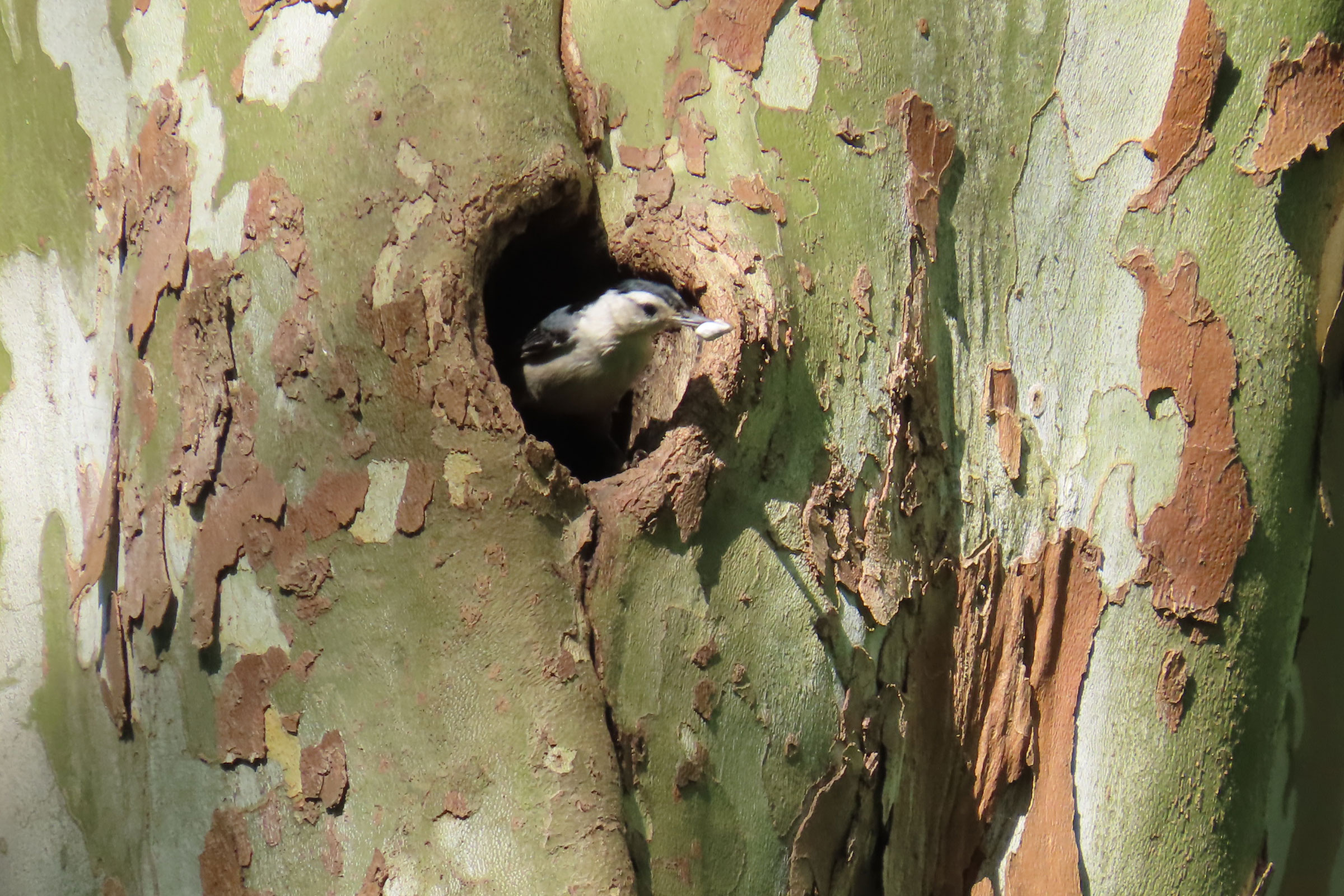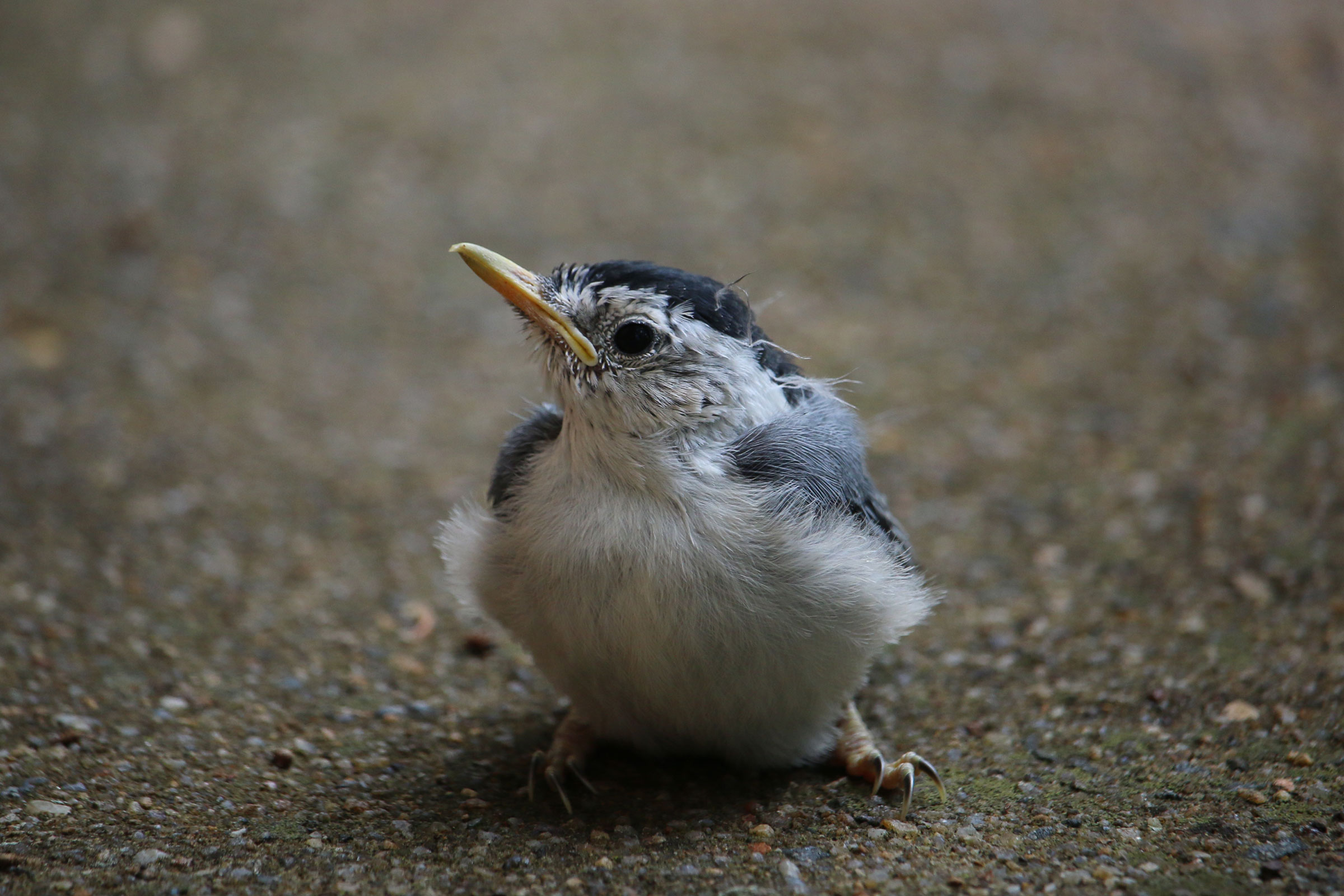Introduction
The White-breasted Nuthatch is a familiar feeder bird throughout the Commonwealth. It is typically found in mature deciduous forests and along their edges, including in suburban areas, and is rarely found in pure coniferous forest or open agricultural areas. Although present year-round in Virginia, it adopts a secretive and quiet demeanor in the breeding season, with hard-to-find nests in existing cavities in old trees (Grubb Jr and Pravosudov 2020). White-breasted Nuthatches typically repurpose and enlarge natural or woodpecker-formed cavities and rarely use nest boxes (Grubb Jr and Pravosudov 2020). Consequently, despite its familiarity, the breeding biology of this species remains understudied.
Breeding Distribution
White-breasted Nuthatches breed throughout Virginia, particularly in the large deciduous forests of the Mountains and Valleys region. They breed sparingly in areas where marine influences restrict the availability of mature deciduous forests, including the Eastern Shore and portions of Virginia Beach and Chesapeake (Figure 1). The likelihood of White-breasted Nuthatches occurring in a block increases as the proportion of forest cover, forest edge habitat, and developed cover increases. Thus, this species relies heavily on deciduous forests, and its correlation with development signals its presence in suburban areas as a backyard bird that may bring its young to feeders. It is less likely to occur in blocks with more shrubland and grassland habitats and a greater number of habitat types.
The White-breasted Nuthatch’s likely occurrence in the Second Atlas was similar to that in the First Atlas (Figures 1 and 2), although some areas along the waterways of the Coastal Plain region did experience some likely increases in probable occurrence (Figure 3).
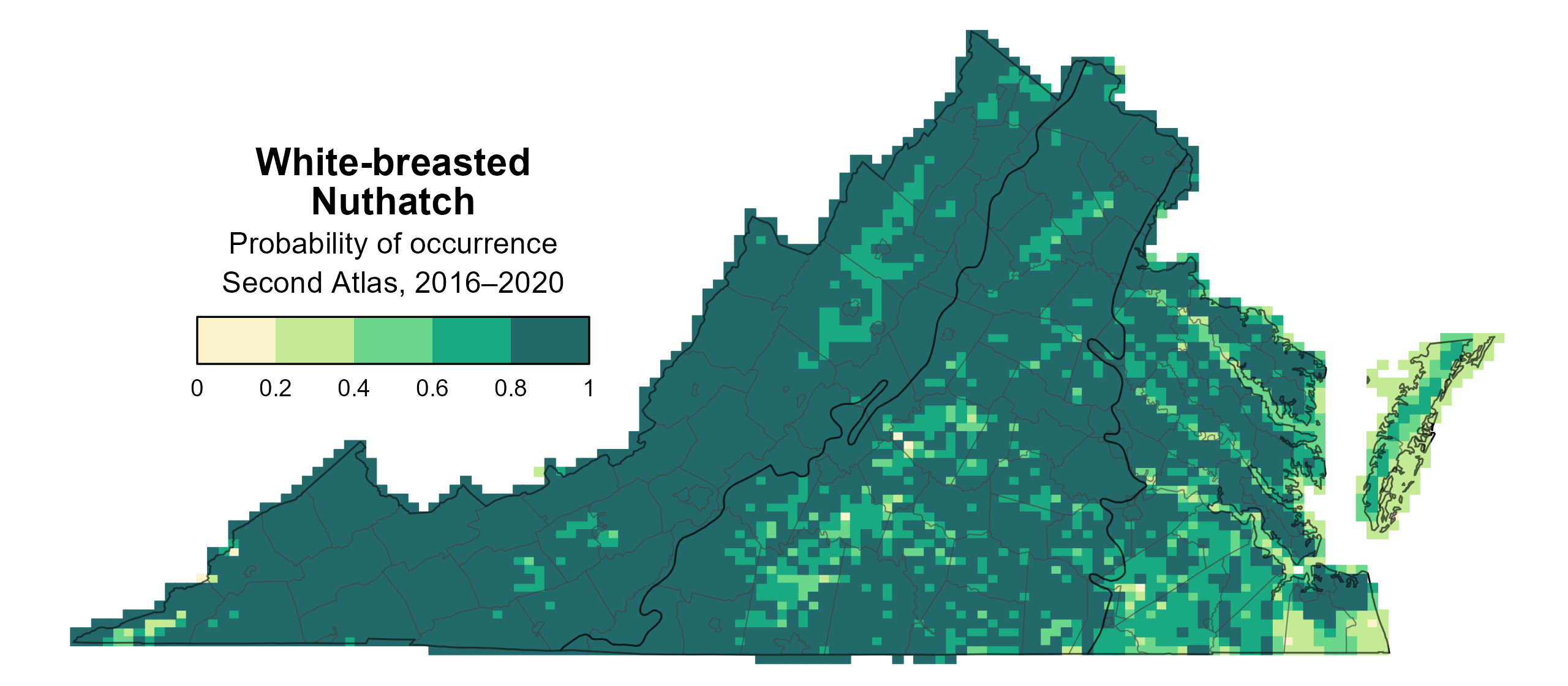
Figure 1: White-breasted Nuthatch breeding distribution based on probability of occurrence (Second Atlas, 2016–2020). This map indicates the probability that this species will occur in an Atlas block (an approximately 10 mi2 [26 km2] survey unit) based on environmental (including habitat) factors and after adjusting for the probability of detection (variation in survey effort among blocks).

Figure 2: White-breasted Nuthatch breeding distribution based on probability of occurrence (First Atlas, 1985–1989). This map indicates the probability that this species will occur in an Atlas block (an approximately 10 mi2 [26 km2] survey unit) based on environmental (including habitat) factors and after adjusting for the probability of detection (variation in survey effort among blocks). Blocks in white were not surveyed during the First Atlas and were not modeled.

Figure 3: White-breasted Nuthatch change in breeding distribution between Atlases (1985–1989 and 2016–2020) based on probability of occurrence. This map indicates the change in the probability that this species will occur in a block (an approximately 10 mi2 [26 km2] survey unit) between Atlas periods. Blocks with no change (tan) may have constant presence or constant absence. Blocks in white were not surveyed during the First Atlas and were not modeled.
Breeding Evidence
White-breasted Nuthatches were confirmed breeders in 400 blocks and 93 counties and probable breeders in an additional nine counties (Figure 4). Notably, this species was essentially absent as a breeder on the Eastern Shore outside of a few confirmations in far northern Accomack County. White-breasted Nuthatches were confirmed breeders in all regions of the state during the First Atlas as well, although it is important to note that survey effort was considerably less (Figure 5).
All types of breeding evidence were recorded (Figure 6). An extremely early breeding confirmation was documented when birds were seen transporting nesting materials from February 27 and occupying nests as early as March 4. Despite the difficulty of observing inside the nest, observers located two nests with eggs. Sightings of fledged young spanned from April 1 to August 30. For more general information on the breeding habits of this species, please refer to All About Birds.
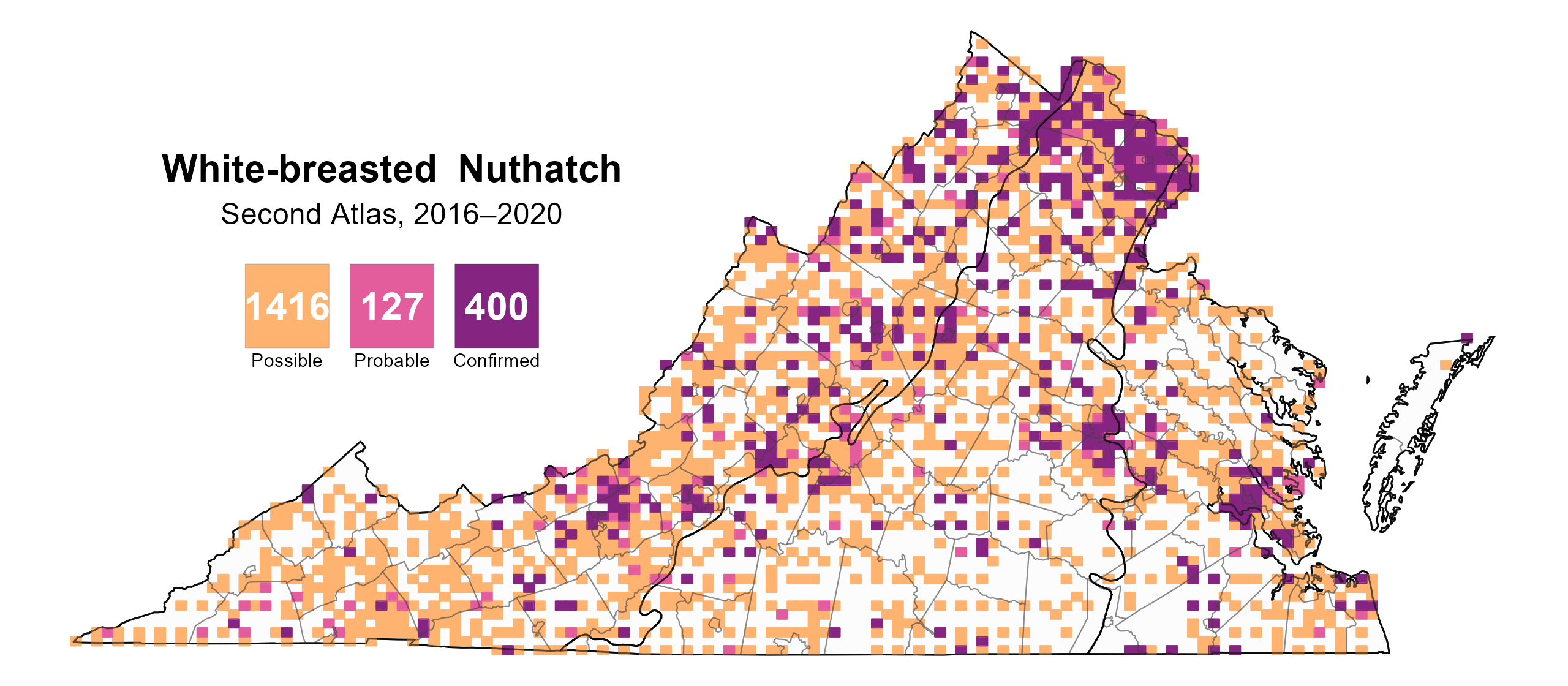
Figure 4: White-breasted Nuthatch breeding observations from the Second Atlas (2016–2020). The colored boxes illustrate Atlas blocks (approximately 10 mi2 [26 km2] survey units) where the species was detected. The colors show the highest breeding category recorded in a block. The numbers within the colors in the legend correspond to the number of blocks with that breeding evidence category.
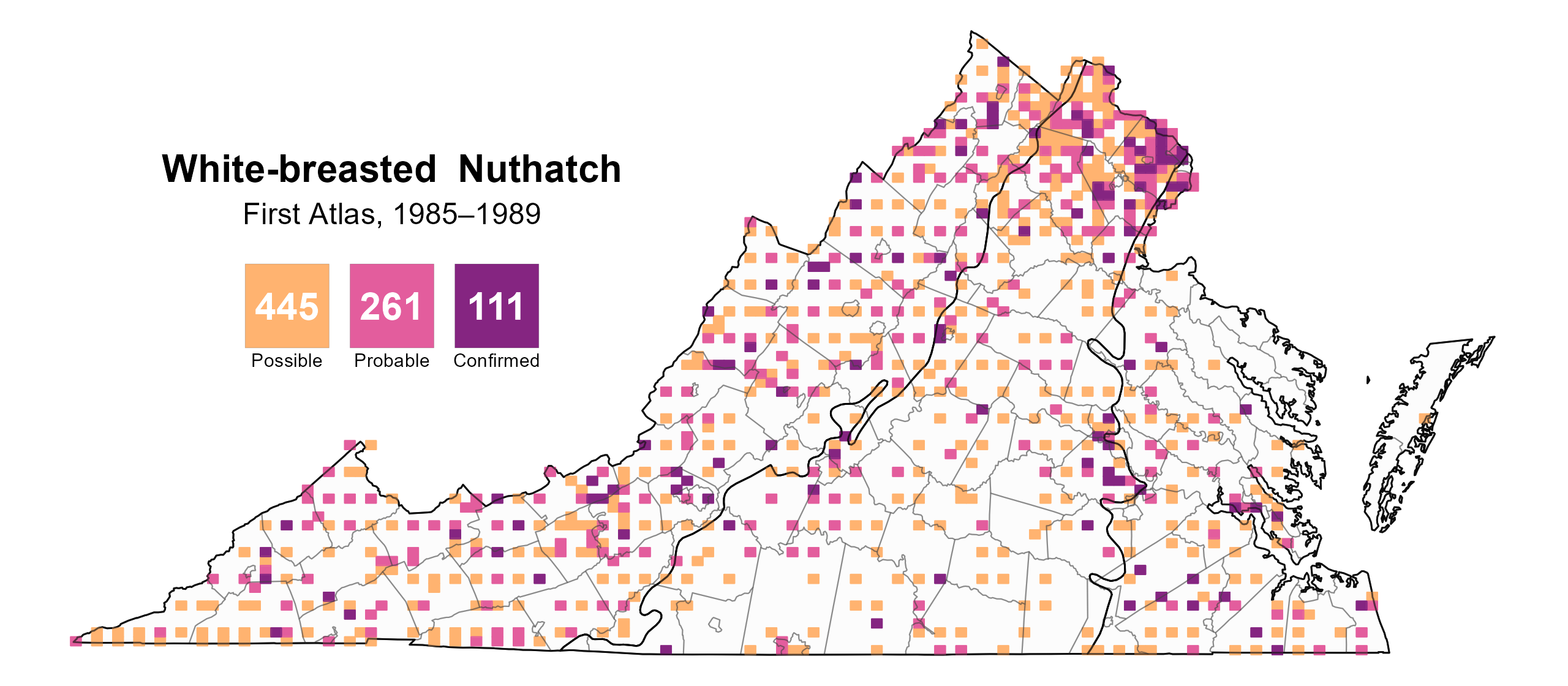
Figure 5: White-breasted Nuthatch breeding observations from the First Atlas (1985–1989). The colored boxes illustrate Atlas blocks (approximately 10 mi2 [26 km2] survey units) where the species was detected. The colors show the highest breeding category recorded in a block. The numbers within the colors in the legend correspond to the number of blocks with that breeding evidence category.
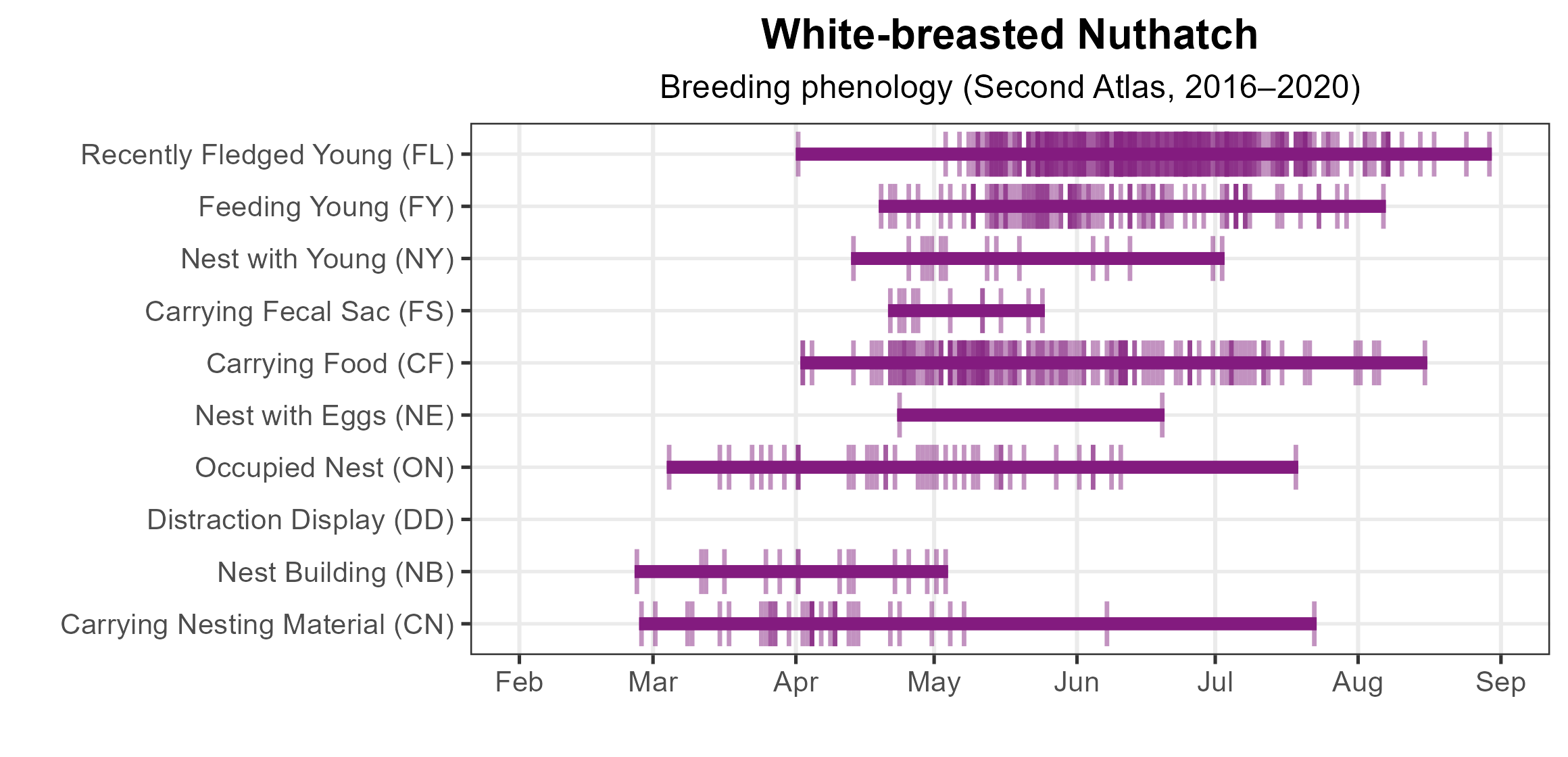
Figure 6: White-breasted Nuthatch phenology: confirmed breeding codes. This graph shows a timeline of confirmed breeding behaviors. Tick marks represent individual observations of the behavior.
Population Status
White-breasted Nuthatch relative abundance was estimated to be generally high across the state, but it was highest in the Blue Ridge and Allegheny Mountains (Figure 7). This species is still present in the Shenandoah Valley but less abundant. They were less abundant in the Coastal Plain region and notably scarce on the Eastern Shore.
The total estimated White-breasted Nuthatch population in the state is approximately 737,000 individuals (with a range between 496,000 and 1,097,000). The White-breasted Nuthatch population is increasing in Virginia as well as across the species’ range. The North American Breeding Bird Survey (BBS) population trend for Virginia showed a significant increase of 1.92% per year from 1966–2022 (Hostetler et al. 2023; Figure 8), and between Atlas periods (1987–2018), the BBS trend showed a similar significant increase of 1.76% per year.
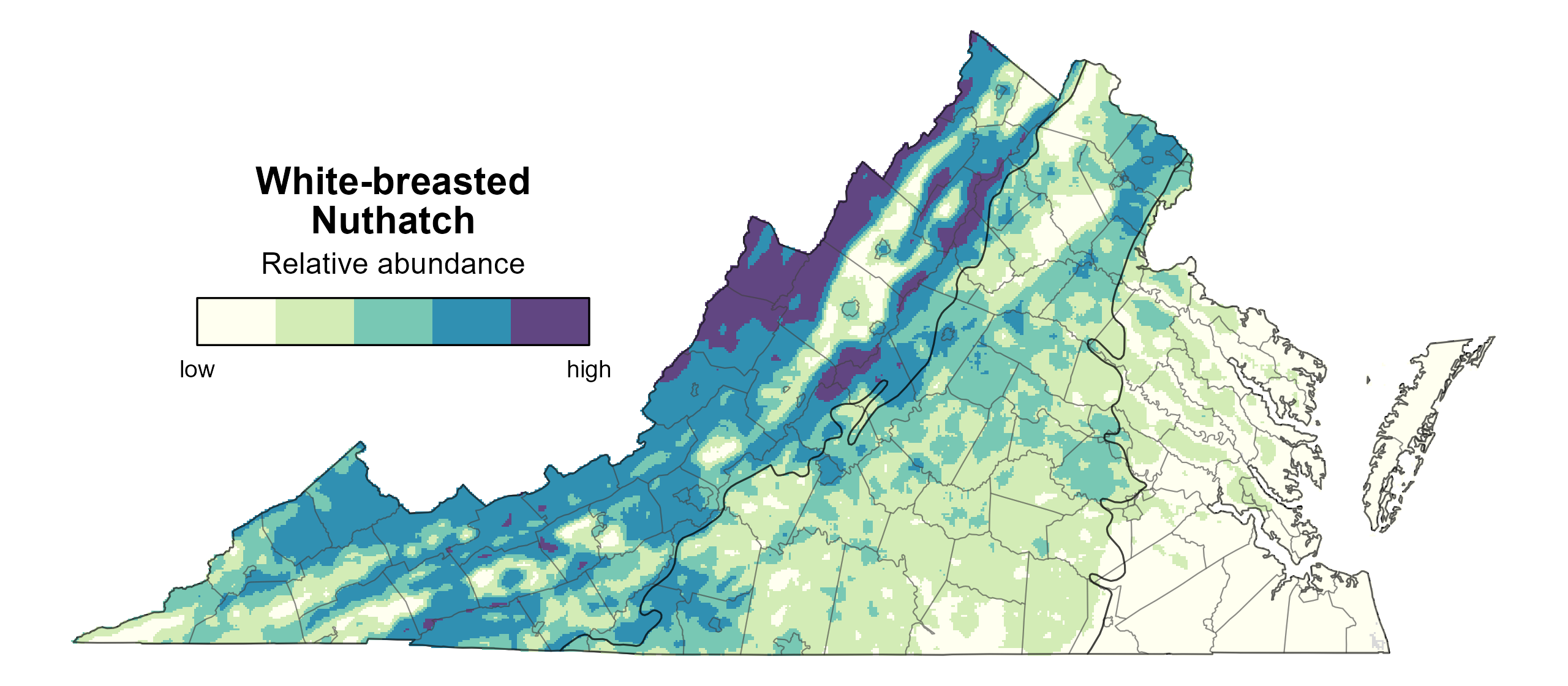
Figure 7: White-breasted Nuthatch relative abundance (Second Atlas, 2016–2020). This map indicates the predicted abundance of this species at a 0.4 mi2 (1 km2) scale based on environmental (including habitat) factors. Abundance values are presented on a relative scale of low to high.
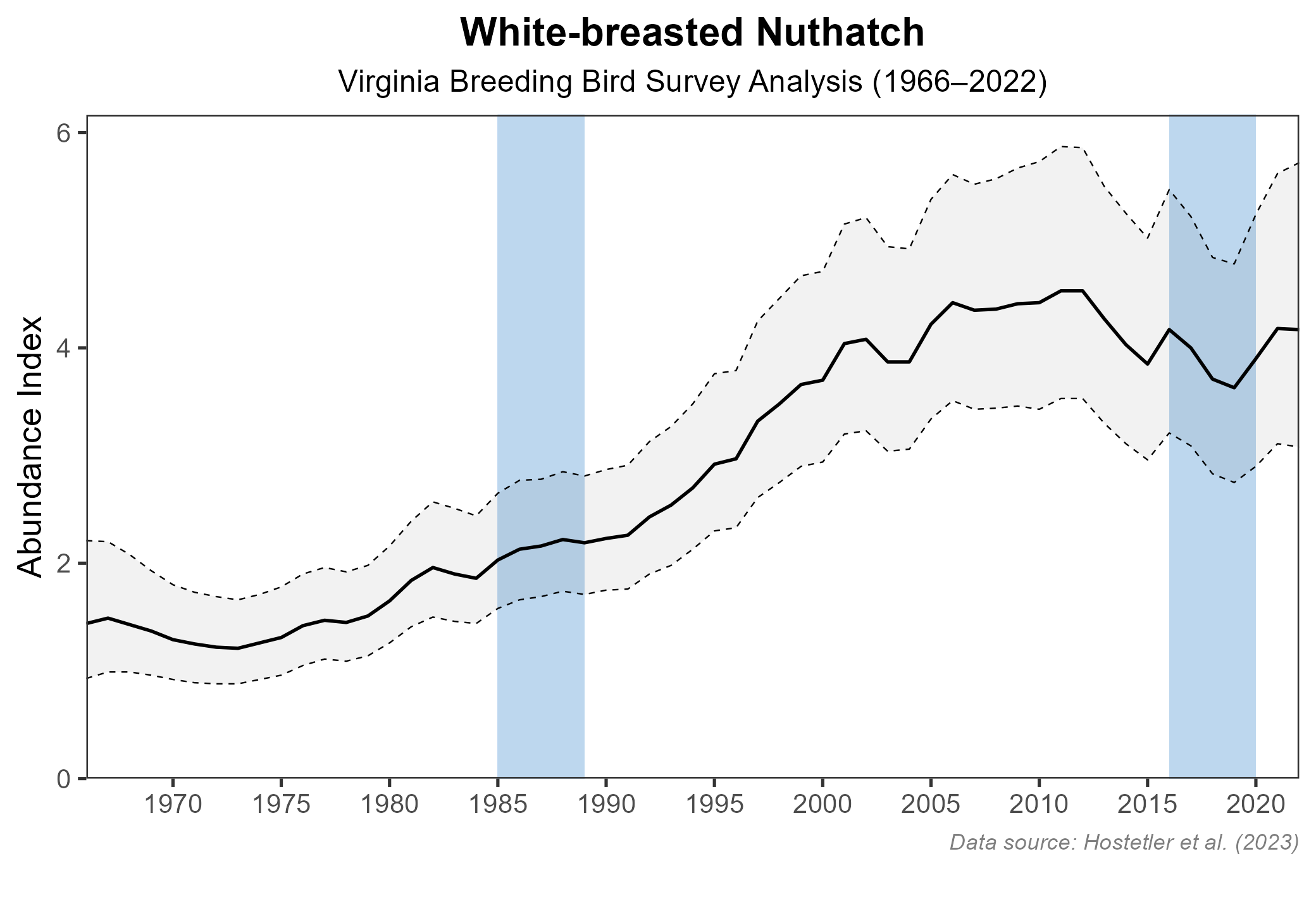
Figure 8: White-breasted Nuthatch population trend for Virginia as estimated by the North American Breeding Bird Survey. The vertical axis shows species abundance; the horizontal axis shows the year. The solid line indicates the estimated population trend; there is a 97.5% probability that the true population trend falls between the dashed lines. The shaded bars indicate the First and Second Atlas periods.
Conservation
Overall, the White-breasted Nuthatch is a hardy, adaptable bird that is at home in suburban areas as well as remote mountain forests. Their populations are secure and increasing, and this species is not the focus of conservation efforts in the state.
Interactive Map
The interactive map contains up to six Atlas layers (probability of occurrence for the First and Second Atlases, change in probability of occurrence between Atlases, breeding evidence for the First and Second Atlases, and abundance for the Second Atlas) that can be viewed one at a time. To view an Atlas map layer, mouse over the layer box in the upper left. County lines and physiographic regional boundaries (Mountains and Valleys, Piedmont, and Coastal Plain) can be turned on and off by checking or unchecking the box below the layer box. Within the map window, users can hover on a block to see its value for each layer and pan and zoom to see roads, towns, and other features of interest that are visible beneath a selected layer.
View Interactive Map in Full Screen
References
Grubb Jr, T. C., and V. V. Pravosudov (2020). White-breasted Nuthatch (Sitta carolinensis), version 1.0. In Birds of the World (A. F. Poole, Editor). Cornell Lab of Ornithology, Ithaca, NY, USA. https://doi.org/10.2173/bow.whbnut.01.
Hostetler, J. A., J. R. Sauer, J. E. Hines, D. Ziolkowski, and M. Lutmerding (2023). The North American breeding bird survey, analysis results 1966–2022. U.S. Geological Survey, Laurel, MD, USA. https://doi.org/10.5066/P9SC7T11.

